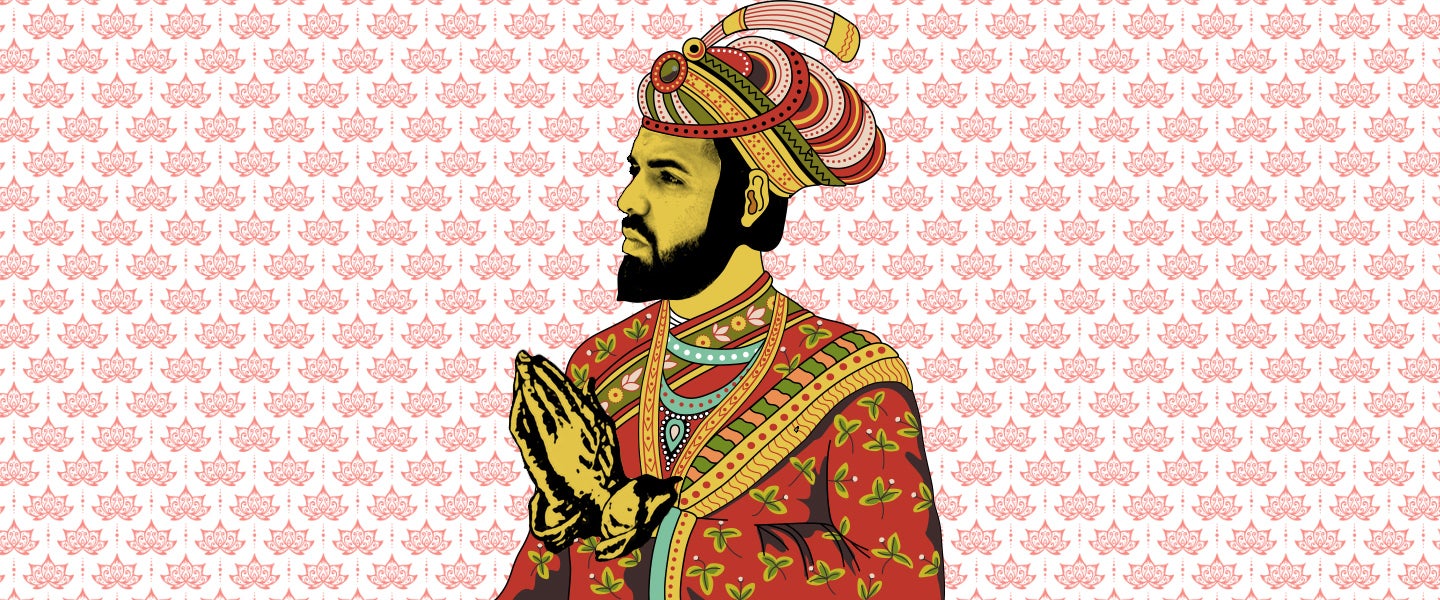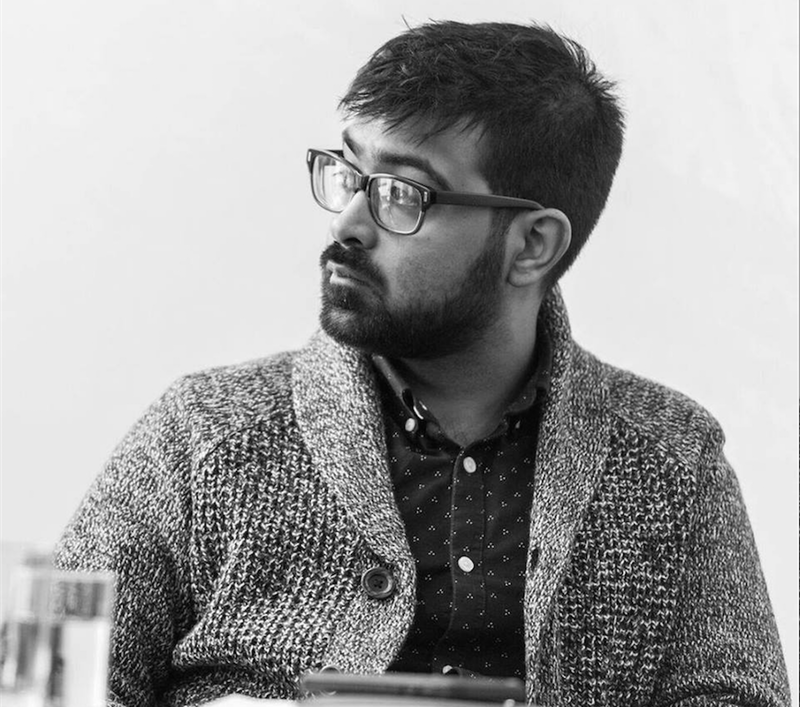Sasha Ahmed, a 23-year-old law student living in London, has noticed something about the Desi (South Asian) guys she dates. “It’s really weird!” she laughs, as she describes their short, faded haircuts and closely trimmed black beards. Some turn up to dates wearing athleisure, gold chains and Air Force Ones. “They think it’s subtle,” she says with a deep sigh. But it’s obvious: “They’re trying to look like Drake.”
It’s not just the aesthetic that’s a giveaway. Ahmed has noticed the guys also try to live up to Drake’s lyrics. “Sometimes it’s the way they act [on dates],” she says. “There’s this cocky kind of swagger, their attempt to use [London] street language, even how they walk. Sometimes they try to be charming but it comes across as really awkward, and they all seem to be mama’s boys… or, at least, really dependent on their moms.”
The trend of South Asian men in their teens and twenties trying to imitate the Toronto-born rapper is so common it’s become a meme.
there’s an entire generation of desi boys who think liking drake is a personality
— ahmed ali akbar (@radbrowndads) May 3, 2019
“Desi guys quoting Drake about only loving their beds and their mamas is so funny lmao pls y’all don’t even love ur mamas, you just love the love they give you,” wrote @hellohafsa in 2018. Another Twitter user, @rnaansi, asked in June, “Why do brown dudes like drake so much? what is it about this rich and attractive light skin black man that resonates so much with you broke busted desi men?”
I want someone to look at me the same way every Desi guy looks at Drake
— Omar Ghusein (@ogg23) April 7, 2018
why do so many brown guys think they’re a desi senti drake when in reality they just have a superiority complex with a large side of mommy issues
— Navjot (@nxvjotk) March 10, 2018
I swear all Desi guys do is go to the gym and tweet Drake lyrics
— Aamir (@Aamirica_) March 5, 2017
sometimes i feel disconnected with other brown guys then i see how much drake is queued up on my playlist and i suddenly feel comfortable with my identity
— vinay (@mumblecomic) June 18, 2019
And no more is this evident than on dating apps. “Eight out of 10 times, when I see a Desi guy on a dating app, he’ll have a Drake lyric in his bio,” says Amira Habib, 23, who works as a secretary for a London-based cosmetics company. “There was one guy whose bio said ‘I like it when money makes a difference but don’t make you different,’ and when we went on the date I ended up paying for the entire dinner because he his credit card kept getting declined. And then I found out that he was working for his parents, and the car he was driving (a Mercedes Benz) was actually his dad’s.” Priya Shah, 28, who works in marketing in New York City, had similar observations. “I was looking exclusively for Desi guys,” she tells me over WhatsApp, “and so many of them had Drake lyrics in their ‘about me’ sections, or when you look at what kind of music they liked, at the top it would always be Drake.” It wasn’t just musical taste either, Priya adds. “They had looks that were influenced by Drake. The same kind of beard, chains, the bomber jacket. There was one guy who I matched with, just so I could ask him if he was a professional Drake impersonator!” (He did not respond and unmatched her within minutes.)
What do so many Desi men in Europe and North America see in Drake? The actor-turned-rapper’s mainstream popularity may not have hit until he dropped Take Care in 2011, but his influence resonated much earlier among Desi guys. In early 2010, South Asian Muslim friends of mine discovered Drake, not through his music videos but via an “Islamic” remix of “Forever” that went viral, in which Drake’s opening verse about getting rich and putting down his haters was replaced by lines about how devout they were as Muslims. “Last name ever, first name greatest/ Like a sprained ankle, boy, I ain’t nothing to play with” became “Last word, religion, first word, greatest/ Like I broke my wudu, boy, ain’t nothin to pray with.”
The video, shot on a grainy camera, featured four South Asian men wearing oversized jeans and baggy T-shirts while sporting clean-cut “my parents expect me to go to law school” haircuts, awkwardly rapping about how much they loved God and Islam. It was one of the first signs that Drake would have a profound cultural impact on young brown guys living in the West.
There is an argument that the appeal of Drake among South Asian men comes from his fluidity, casual aesthetic and light skin. His general corniness and softboi brand have positioned him to be “everything to anyone.” “I think Drake represents a sort of ‘soft’ blackness to a lot of young Desi guys — he’s someone who can be emulated in a way that Kanye or Lil Wayne or J. Cole or Travis Scott can’t be,” says Sanaa Saeed, a host and senior producer at AJ+, where she is currently working on a show about pop-culture history. “He raps about emotions, he says ‘mashAllah’ and ‘wallahi,’ he smokes shisha and surrounds himself with Lebanese guys. He’s light-skinned, sports a beard; he’s from Toronto. None of this is to talk about how Drake owns or experiences his own blackness — but how easy it is to project a softer blackness on him when you’re not black, but part of another minority community. In the simplest terms: He’s seen as encompassing a non-threatening blackness.”
In that way, Saeed suggests, the appeal of Drake comes from his position as an accessible male role model for young men of color. “Drake emerges as a model of masculinity that isn’t over or undersexed, just misunderstood, funny with a broken heart,” Saeed says. “He’s smooth, he’s suave; he’s funny, he doesn’t take himself so seriously; he’s in touch with his feelings: He’s the ‘nice guy’ who can get it.”
This catch-all appeal of Drake is amplified by the internet, where it’s often difficult to disassociate his position as an artist at the top of his game when he’s also a meme that’s produced thousands of viral videos and gifs. “[Drake] isn’t a hip-hop deity perched atop a mountain of platinums, like Jay Z or some of his other contemporaries,” wrote Alana Hope Levinson (now deputy editor of MEL) for Matter in 2015. “Girls smash his heart to pieces, he has daddy issues and people give him shit (in this case, about being a biracial middle-class guy from Canada, about starting his career playing Jimmy Brooks, a kid in a wheelchair, on Degrassi).”
For some Desi men, the appeal of Drake has less to do with how ambiguity allows them to project their identities onto him. Instead, in Drake’s cultural fluidity, they can see a version of themselves, an ethnic group that contemporary pop culture has not been able to define. Speaking to Yale students in 2014 about the arrival of South Asians in America, the Jazz musician Vijay Iyer said, “South Asian Americans were so new, people didn’t really know who or what we were. We hadn’t yet emerged en masse into mainstream culture. … We were primarily a mystery; our experience was framed by difference; we were mostly unconsidered, our existence largely unacknowledged.” As a result, Iyer suggested that young South Asians living in the West, with a lack of cultural representation, had little choice but to move away from their identities and gravitate toward other cultural groups. In most cases, these took place in urban, multicultural areas of major cities like London, New York, Toronto and Paris, and writers like the Fader’s Anupa Mistry argued that “in the absence of aspiration that reflected our own hybrid South Asian identities, we gravitated toward black culture and role models.”
“Identity isn’t singular, and it isn’t stagnant, and perhaps Drake is the best example of this,” writer Sultan Isfahan argued in his January essay “Why Do Brown Guys Love Drake?” He suggests that despite Drake having no direct affinity to South Asian culture or even the continent’s music, it’s his appreciation of diaspora — and his own multiple identities as a middle-class Canadian, with African-American and Jewish roots — that mirrors the unique Desi experience.
It’s no doubt, then, that the appeal of Drake to young, disenchanted Desis looking for relatable male role models is still as strong as ever. And even though women like Ahmed can understand why, she does say the emulation can get repetitive, if not slightly tedious. “I just live in fear of when the next Drake song drops!” she jokes. “Because you can guarantee the next day the lyrics will be all over these boys’ Twitter bios and [dating app] profiles.”

